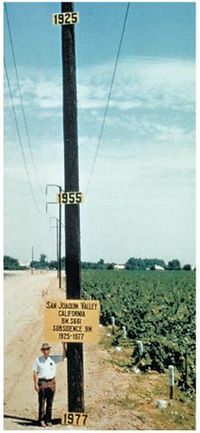
Photo from wikipedia
Groundwater pollution susceptibility mapping using parsimonious approaches with limited data is of utmost importance for water resource and health planning, especially in data-scarce regions. Current research assesses groundwater nitrate susceptibility… Click to show full abstract
Groundwater pollution susceptibility mapping using parsimonious approaches with limited data is of utmost importance for water resource and health planning, especially in data-scarce regions. Current research assesses groundwater nitrate susceptibility by considering the various combination of explanatory variables. In this study, the novel machine learning models of Weighted Subspace Random Forest (WSRF) and Generalized Additive Model using LOESS (GAMLOESS) are applied, and the results are compared with well-known machine learning models of K-Nearest Neighbors (KKNN) and Random forest (RF). The optimum combination of inputs for groundwater nitrate susceptibility mapping is identified using the k-fold cross-validation methodology. Results indicated that the combination of variables of precipitation, groundwater level, and lithology had the best performance among the 16 combinations. Modeling performance using the optimum combination demonstrated that the new ensemble approach, the WSRF model, had superior performance according to the evaluation metrics of accuracy (0.87), Kappa (0.73), Precision (0.92), False Alarm Ratio (0.08), and Critical Success Index (0.75). The susceptibility assessment results of this paper can be a useful tool in developing strategies for the prevention and protection of groundwater pollution.
Journal Title: Ground water
Year Published: 2022
Link to full text (if available)
Share on Social Media: Sign Up to like & get
recommendations!